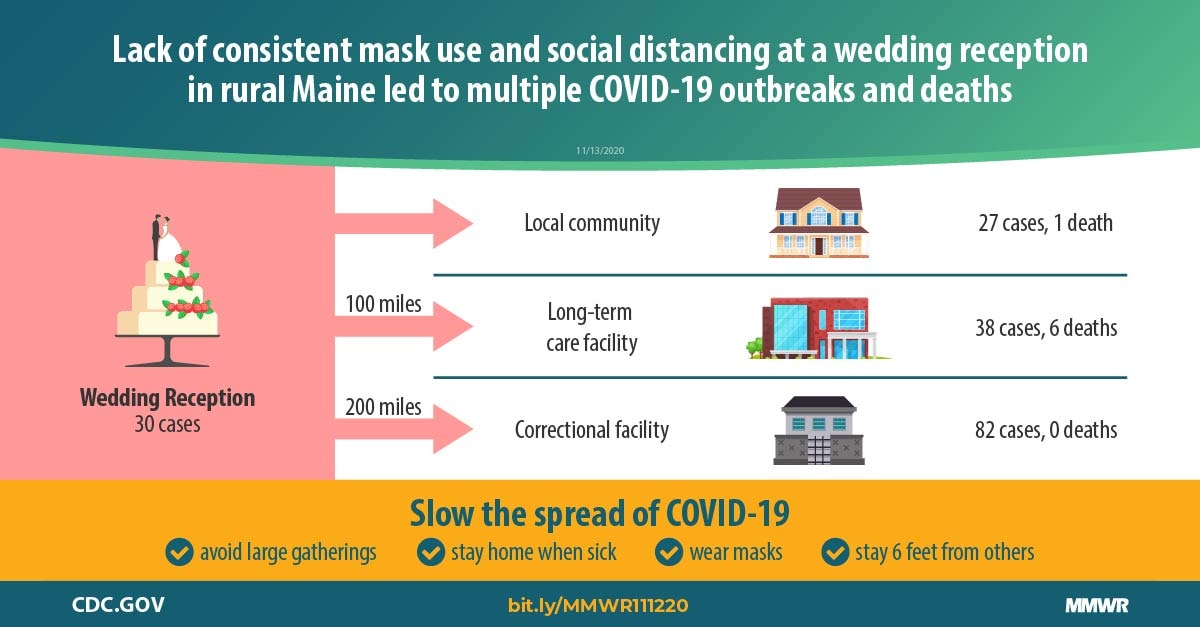- Joined
- Jun 8, 2008
- Messages
- 54,275
Unbelievable.
Common sense isn't common.
Stupidity rules the day.


 www.cdc.gov
www.cdc.gov

 www.today.com
www.today.com

 ktla.com
ktla.com
Common sense isn't common.
Stupidity rules the day.

Multiple COVID-19 Outbreaks Linked to a Wedding Reception in ...
This report describes a COVID-19 outbreak linked to a wedding reception in a rural town in Maine.

Ohio wedding leads to 32 COVID-19 cases – including newlyweds
The couple had scaled back their wedding from 200 guests to 85 people.

Super-spreading wedding in Maine demonstrates COVID-19 risk posed by holiday gatherings
If you want to know why public health officials are so nervous about how much worse the COVID-19 pandemic will get as the holiday season unfolds, consider what happened after a single,&nb…





300x240.png)